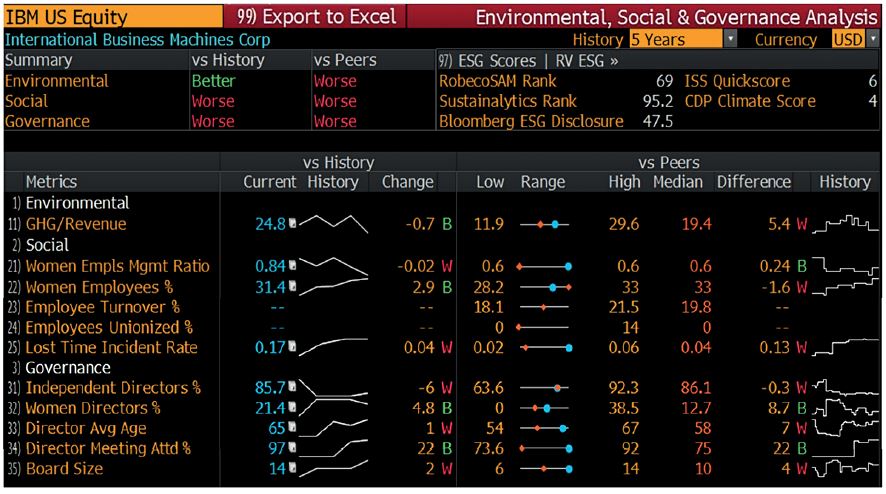Evan Harvey, Nasdaq: ESG Reporting – Six Reasons Why

NASDAQ
The corporate reporting of sustainability data – call it ESG, or environmental, social, and governance data – has come a long way. Only 20% of Fortune 500 companies reported ESG data in 2011. By 2016, according to the Governance and Accountability Institute, only 20% failed to report. More than 10,500 organizations have created almost 40,000 separate sustainability reports, according to the Global Reporting Initiative. The Bloomberg terminal now includes more than 700 different ESG disclosures from nearly 12,000 companies.
This information flood has produced interesting market insights, but it is also becoming clear that the value of ESG reporting does not reside entirely in the output of data. The very process of gathering this data and integrating it into management practices can create operational and economic benefits beyond those determined by investor valuation. ESG-related efficiency and performance improvements can impact intangible brand value, enterprise risk management, and product and service innovation.
Stock Exchanges Step Up
The significant increase in ESG data reporting has been driven by a number of cultural dynamics, including the climate crisis, economic instability, institutional scrutiny, and the rise of “big data” analytics. But discrete initiatives have also been influential. The UN Sustainable Stock Exchanges initiative, launched in 2009, has successfully encouraged 33 exchanges to publish ESG reporting guidance to their listed companies. The Sustainability Working Group at the World Federation of Exchanges spent two years (2013-2015) researching the intersection between market forces and ESG performance, ultimately advocating for 33 separate and distinct data disclosures.
“The UN Sustainable Stock Exchanges initiative, launched in 2009, has successfully encouraged 33 exchanges to publish ESG reporting guidance to their listed companies.”
Other projects – the FSB Task Force on Climate-Related Financial Disclosures, the SEC Regulation S-K Concept Release (US), and the Non-Financial Reporting Directive (EU), amongst others – have also fostered awareness. But in each of these cases, the data products themselves are not the only tangible sign of progress. Indeed, each initiative has taken great pains to elucidate the business case behind ESG reporting, the internal value drivers that companies may realise just by undertaking this work.
While ESG factors are often seen as non-financial performance indicators, the ways in which a company tracks, measures, and manages them undoubtedly has financial consequences. The very term “non-financial” is a misleading one, because ESG information is relevant and measurable. If investors are attracted to a company, and own the stock longer, due to ESG performance signals, that has a real financial impact. But the subtle values that sustainability can provide, as we detail below, may also be just as measurable.
Looking Beyond the Balance Sheet
Academics and investors have been able to find correlation between companies with good ESG practices and other positives, such as lower cost of capital, lower stock price volatility, and better valuation over the long term. Deutsche Asset & Wealth Management, for example, recently published a study (ESG & Corporate Financial Performance: Mapping the Global Landscape) that reinforced this supposition. We would also draw your attention to a recent paper published by UNEPFI titled Fiduciary Duty in the 21st Century. As those and other sources assert, the broad impact of ESG creates real impacts upon a host of business drivers, including:
- Access to capital
- Cost savings and productivity
- Risk management
- Revenue growth and market access
- Brand value and reputation
- License to operate
- Human capital management
- Employee retention and recruitment
- Mergers and acquisitions
- New product and service innovation
But this list does not address other impacts, tactical concerns that exchanges believe are of increasing importance to our issuers. Exchanges often serve as ESG touchpoints, training partners, and investment facilitators for public companies. As part of that engagement, and faced with the variant opinions of thousands of well-run companies, exchanges are compelled to create a business case of their own: Why are exchanges doing this work? How can we work together to create value? These six distinct value drivers, all tied to best practices in ESG, have proven most persuasive.

Source: Bloomberg
1. Overcoming Framework & Questionnaire Fatigue
There are dozens of reputable reporting agencies and ratings firms covering “sustainability” in the broadest sense; companies are besieged with requests for ESG information, especially in the supply chain and RFP process. ESG reporting advice from the exchange often helps companies separate the meaningful from the esoteric and efficiently prioritise information requests.
2. Gaining Competitive Advantage
Companies with the expertise and resources to gather and report ESG data, as well as handle a diverse multitude of stakeholder interests, are disproportionately winning contracts, customers, and media praise. Exchanges can make this case successfully – and often do.
3. Broadening Investor Outreach
According to the Forum for Sustainable and Responsible Investment (US SIF), “more than one out of every five dollars under professional management in the United States – $8.72 trillion or more – was invested according to SRI (Sustainable, Responsible, Impact investing) strategies.” A significant knowledge gap still exists between investors and IR on the topic of ESG disclosure, and exchanges work diligently with companies to turn sustainability into a positive outbound narrative for corporates.
4. Redefining Internal Value Metrics
Successful integration and analysis of ESG data (and related exercises, such as materiality analyses) can lead to direct energy cost savings, elimination of organisational redundancies, innovative new products and services, and even improved staff morale – all of which have tangible economic impacts.
5. Boosting Recruitment & Retention
Good ESG policies (though often expressed, with purposeful nuance, as corporate social responsibility or corporate citizenship plans) are no longer optional. Companies with a neutral or negative perception on this topic have trouble finding and keeping talent and tend to pay more for it.
6. True Enterprise Risk Management
Companies (and especially boards) wishing to have a full understanding of their long-term risk profile cannot ignore ESG factors. The resources required to manufacture a product, for example, must be in place (and similarly priced) for many years into the future. The risks that may arise due to social inequities, or labour dynamics, must be adequately forecast. Public company board members are taking a more holistic view of the organisation than ever before, thinking (in some cases) beyond the fiduciary boundaries of shareholder return.
Based on these dynamics, feedback from investors and issuers, and the growing awareness of global regulators, it’s clear to exchanges that a smart and strategic process of monitoring, managing, and reporting of ESG data is preferential. This is the way we can help to create better companies – and better markets – for years to come.

About the Author
Evan Harvey is the Director of Corporate Responsibility for Nasdaq. He also serves on the Board of Directors for the UNGC US Network and chairs the Sustainability Working Group at the World Federation of Exchanges.
You may have an interest in also reading…
Partners Who Put Their Faith in Egypt’s Burgeoning Economy
Aly El Ghannam and Marwan El Khedry – “The Partnership”, as they choose to be called – established Ostoul Capital
Matein Khalid: A Random Walk Down Silicon Valley’s Pre-IPO Deal Flow
2020 was a spectacular year for investing in late stage technology unicorns and I am proud to have led significant
Uzbekistan on the Path to Becoming Carbon-Neutral
In the race to become carbon-neutral, it is useful to look at where the race began. In Uzbekistan, a nation



















































































